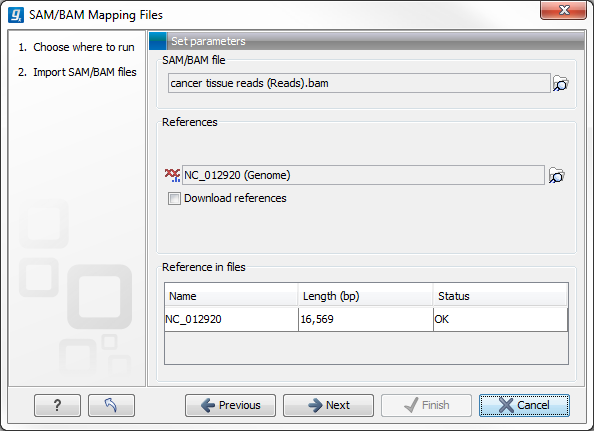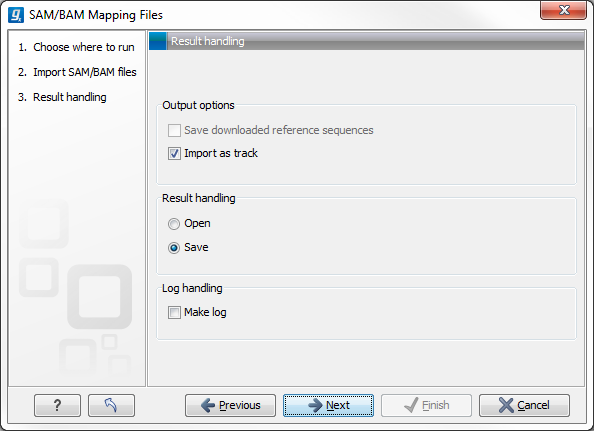Some notes regarding reference sequence naming
Reference sequences in a SAM/BAM file cannot contain spaces. If the name of a reference sequence in the Workbench contains spaces, the Workbench assume that the names of the references in the SAM file will be the same as the names of the References within the Workbench, but with all spaces removed. For exapmple, if your reference sequence in the Workbench was calledmy reference sequence, the Workbench would recognize a reference in the SAM file as the appropriate reference if it was of the same length and had the name myreferencesequence.
Neither the @ character nor the = character are allowed within reference sequence names in SAM files. Any instances of these characters in the name of a reference sequence in the Workbench will be replaced with a _ for the sake of identifying the appropriate reference when importing a SAM or BAM file. For example, if a reference sequence in the Workbench was called my=reference@sequence, the Workbench would recognize a reference in the SAM file as the appropriate reference if it was of the same length and had the name my_reference_sequence.

Figure 6.13: Defining SAM/BAM file and reference sequence(s).
Click Next to specify how to handle the results (Figure 6.14). Under Output options the "Save downloaded reference sequence" will be enabled if the "Download references" box was ticked in the previous step (which would be the case when the SAM/BAM file contained information about where to find the reference sequence e.g. if the SAM/BAM file came from an external provider).
Ticking the "Import as track" box results in the generation of a track-based mapping. If the box is not ticked, the file is imported as a standard mapping object.
We recommend choosing Save in order to save the results directly to a folder, as you will probably wish to save the data anyway before proceeding with your analysis. For further information about how to handle the results.

Figure 6.14: Specify the result handling.
Note that this import operation is very memory-consuming for large data sets, and particularly those with many reads marked as members of broken pairs in the mapping.
